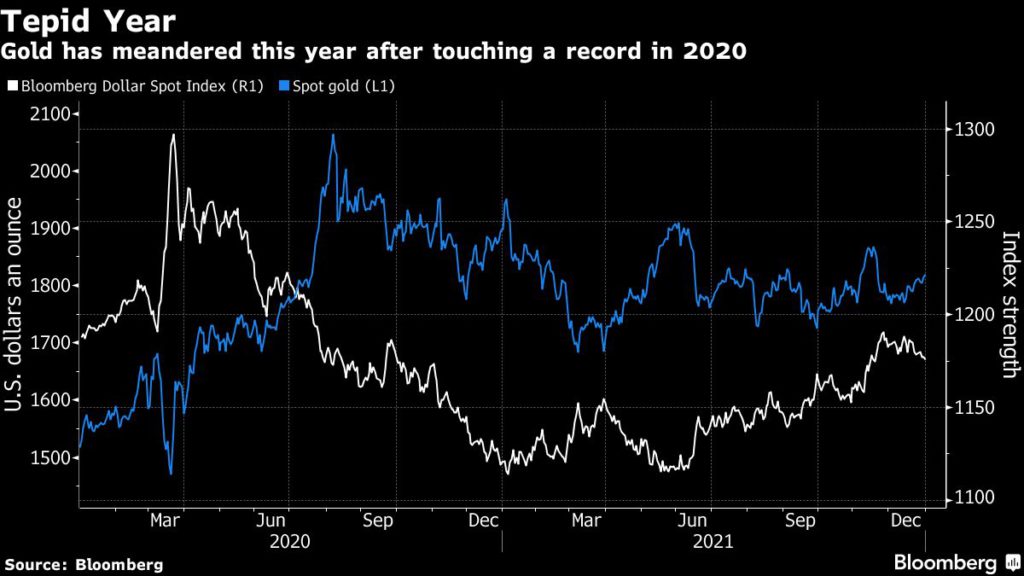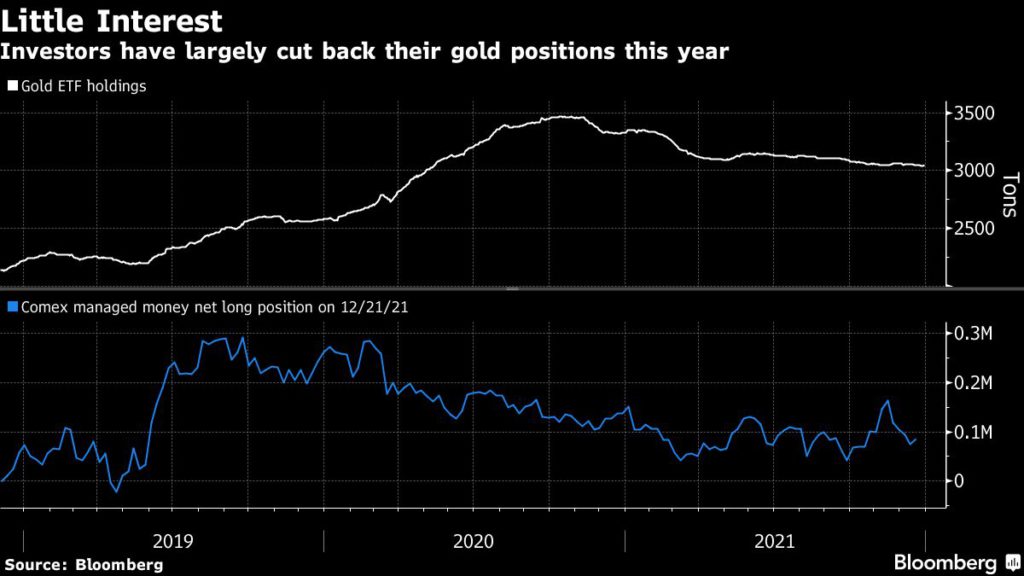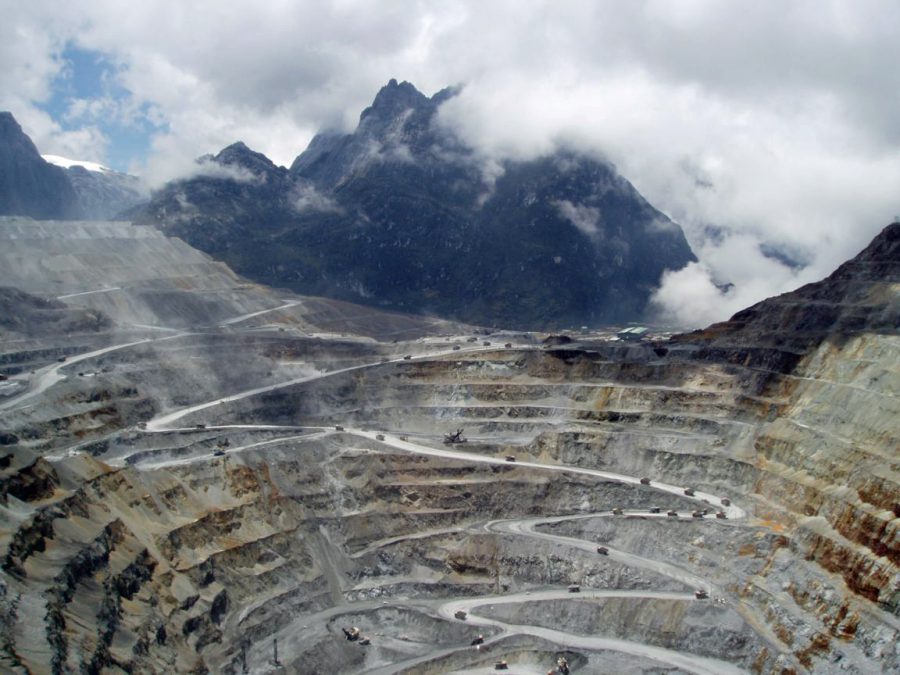Gold price set for worst year since 2015

Gold is set to end 2021 the same way it spent much of the year: little movement and tottering along somewhere in the vicinity of $1,800 an ounce.
This represents a sharp contrast to 2020, when the economic turbulence of the covid-19 pandemic drove the metal’s price to record levels as investors sought safe haven for their money.
[Click here for an interactive chart of gold prices]

While bullion is famously touted as a hedge against rising prices, it has failed to capitalize on this year’s scorching-hot inflation that stemmed from the pandemic-era stimulus.
Spot gold has fallen about 4% this year, on track for its biggest annual decline since 2015.
A stronger US dollar and the threat of a pullback in stimulus by the world’s major central banks have deterred many investors, who saw better opportunities in surging equity markets.
The booms and busts of Bitcoin — considered by many as a digital equivalent to gold — also captured attention.
Gold started the year under pressure, dropping 10% in the first quarter, as vaccine successes spurred hopes for a quick recovery from the pandemic. Prices later rebounded after the emergence of new virus variants and political gridlock in the US.
One key factor has been a lack of interest from financial investors, who are crucial to driving gold’s rallies. Holdings in exchange-traded funds have dropped almost 9% through the year, while hedge funds trading Comex futures have kept their bullion bets muted.

While the prospect of monetary tightening hurt gold’s appeal, prices were supported by strong demand from Asian jewelry consumers and central bank buying.
The opposing drivers have left bullion hovering almost magnetically around the $1,800-an-ounce mark, which is still a historically high price but a disappointment for those expecting an encore of 2020.
Related read: Top gold stories of the year and what to expect in 2022
However, some analysts believe the equilibrium between dip buyers and sellers may not hold for long. More gains in the dollar could spell misery. On the other hand, signs of persistent, runaway inflation could finally provide the spark needed for a sustainable gold rally.
BlackRock’s Evy Hambro told Bloomberg earlier this month that gold could climb in 2022, driven by a combination of real interest rates, US dollar performance and demand for haven assets.
However, analysts at JPMorgan see gold coming under further pressure as the global economic recovery continues, forecasting an average price of $1,631 an ounce for next year.
On Friday, spot gold traded up 0.3% to $1,821.50 an ounce by 11:40 a.m. ET, its highest in over five weeks. Meanwhile, US gold futures rose 0.6% to $1,825.80 an ounce in New York.
(With files from Bloomberg)
More News
First Quantum pulls back from arbitration on Panama copper mine
Signals potential for more negotiations with the nation over the Cobre Panama mine that’s been shuttered for more than a year.
March 31, 2025 | 04:30 pm
Freeport-McMoRan lowers first-quarter gold sales forecast
The company said it expects first-quarter gold sales to be roughly 100,000 ounces below its prior forecast of 225,000 ounces.
March 31, 2025 | 03:41 pm
{{ commodity.name }}
{{ post.title }}
{{ post.excerpt }}
{{ post.date }}



Comments